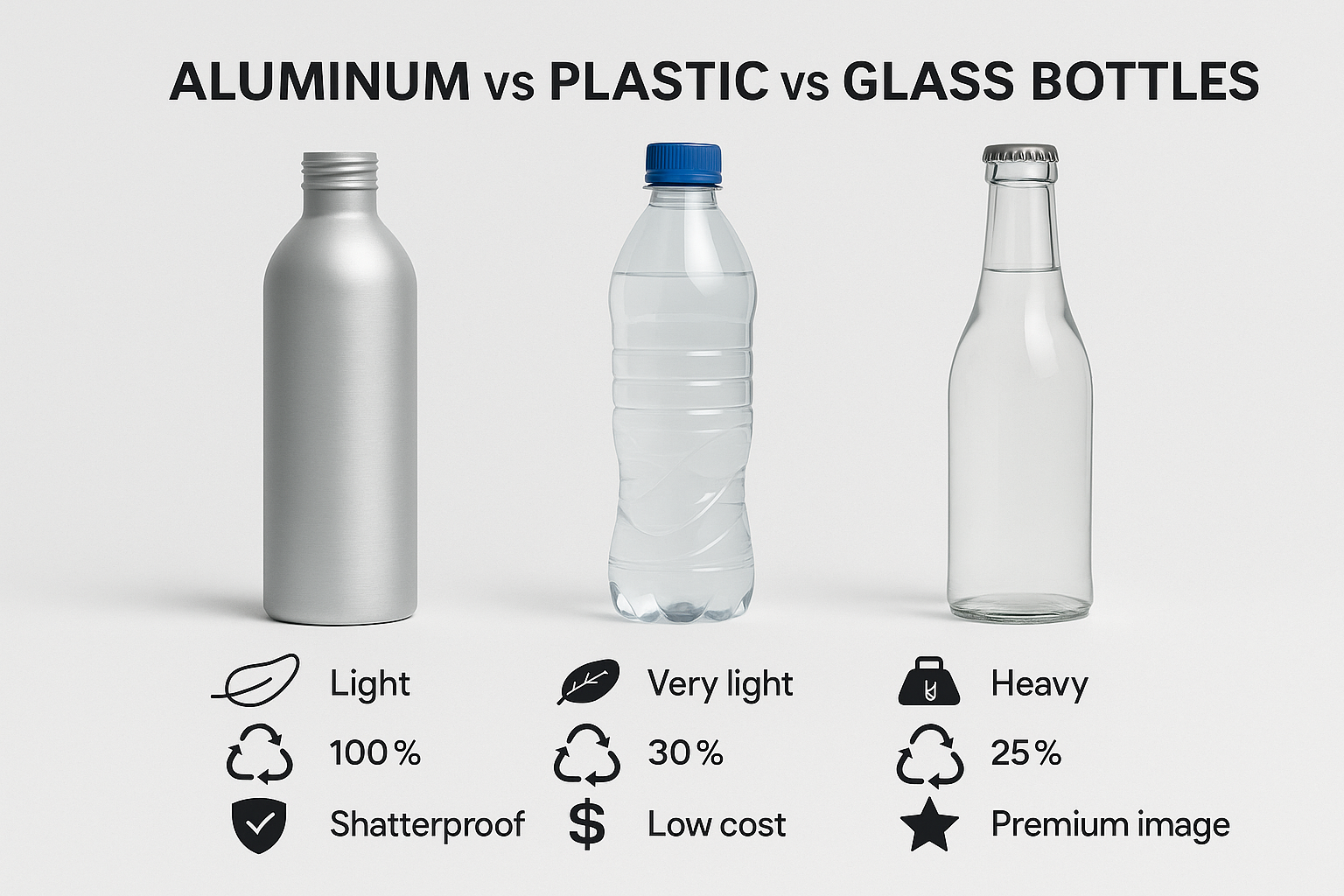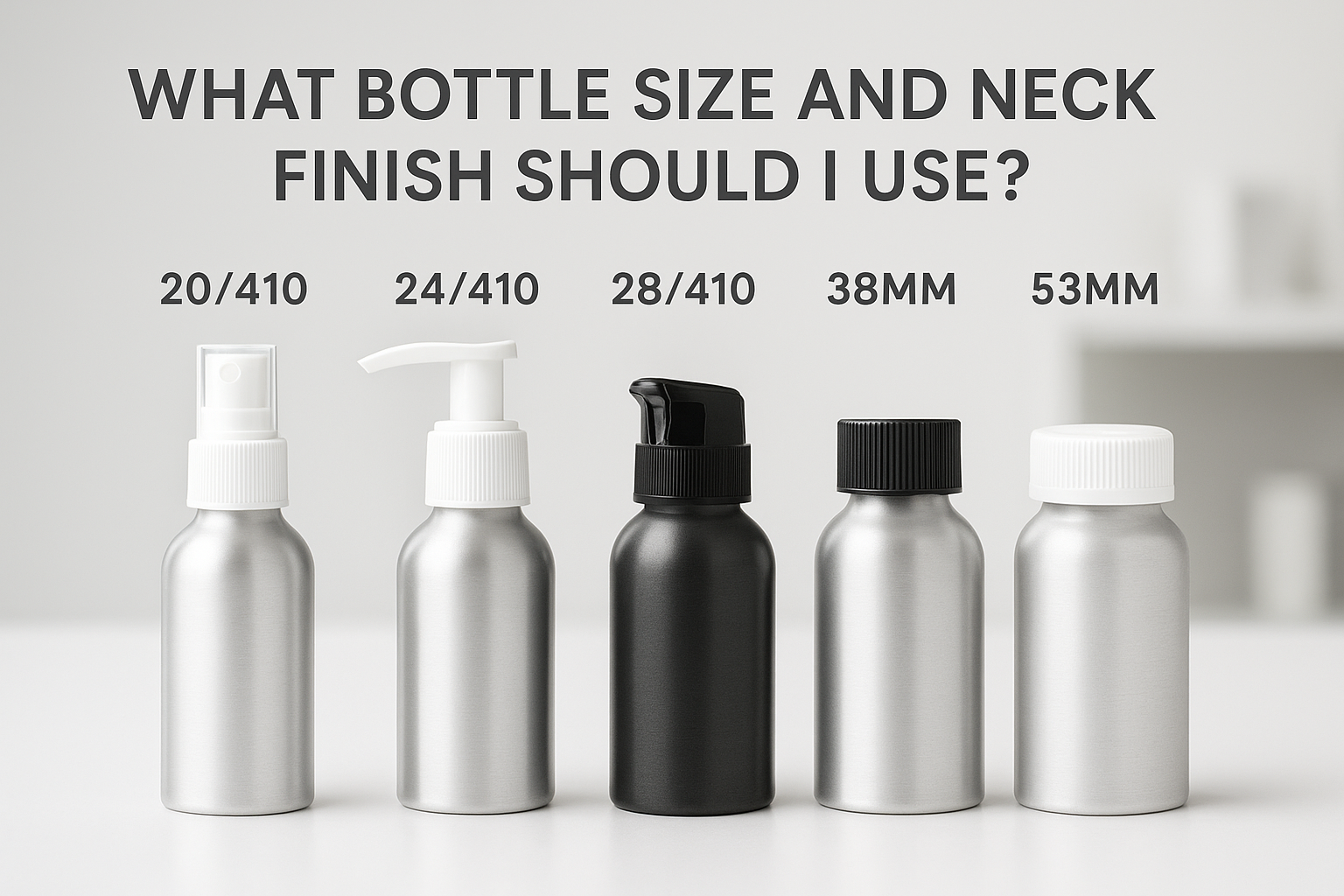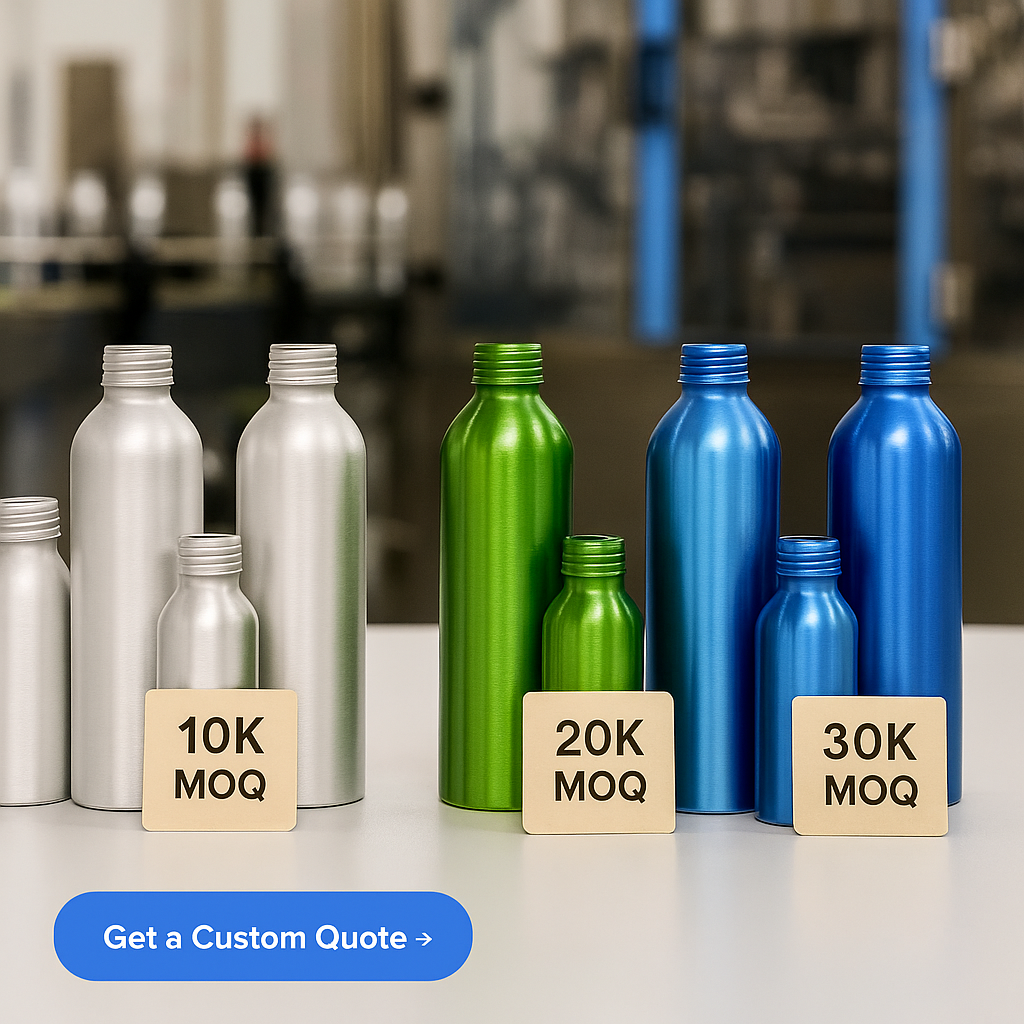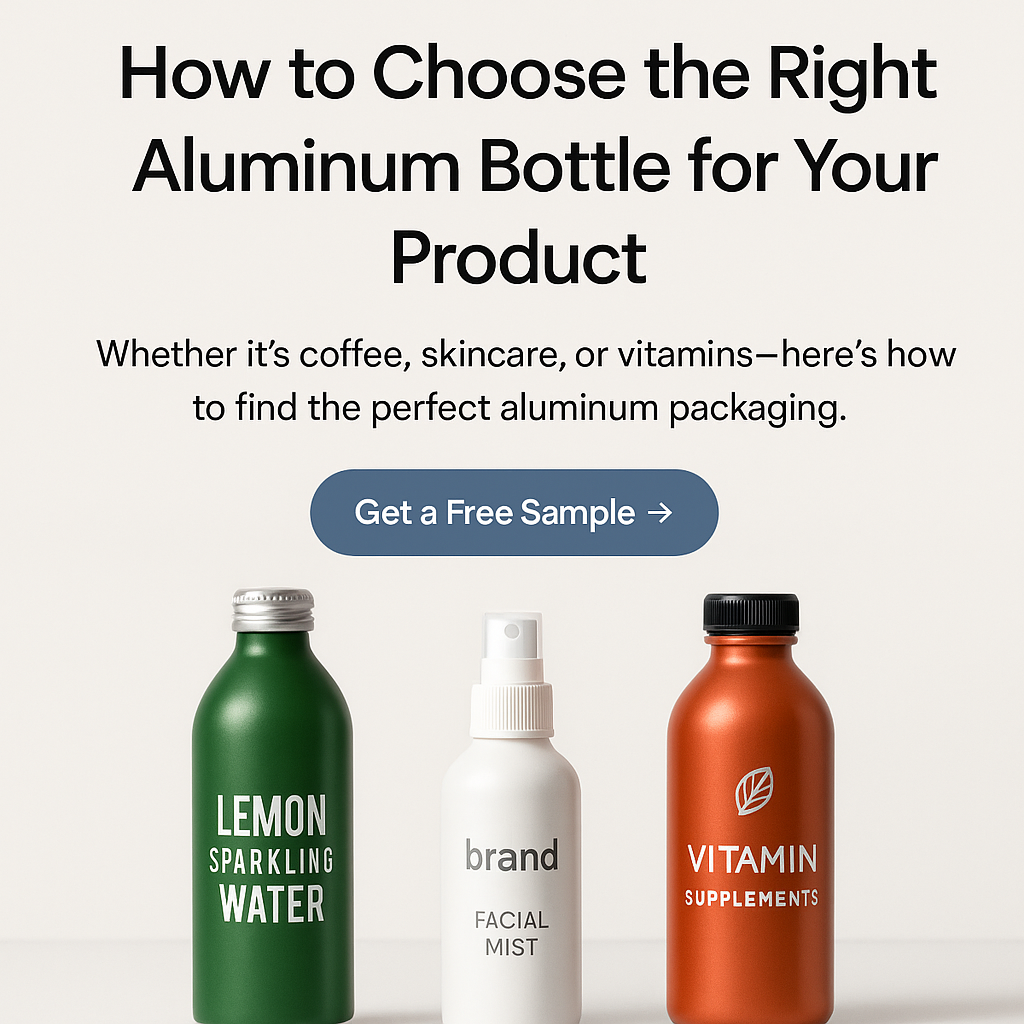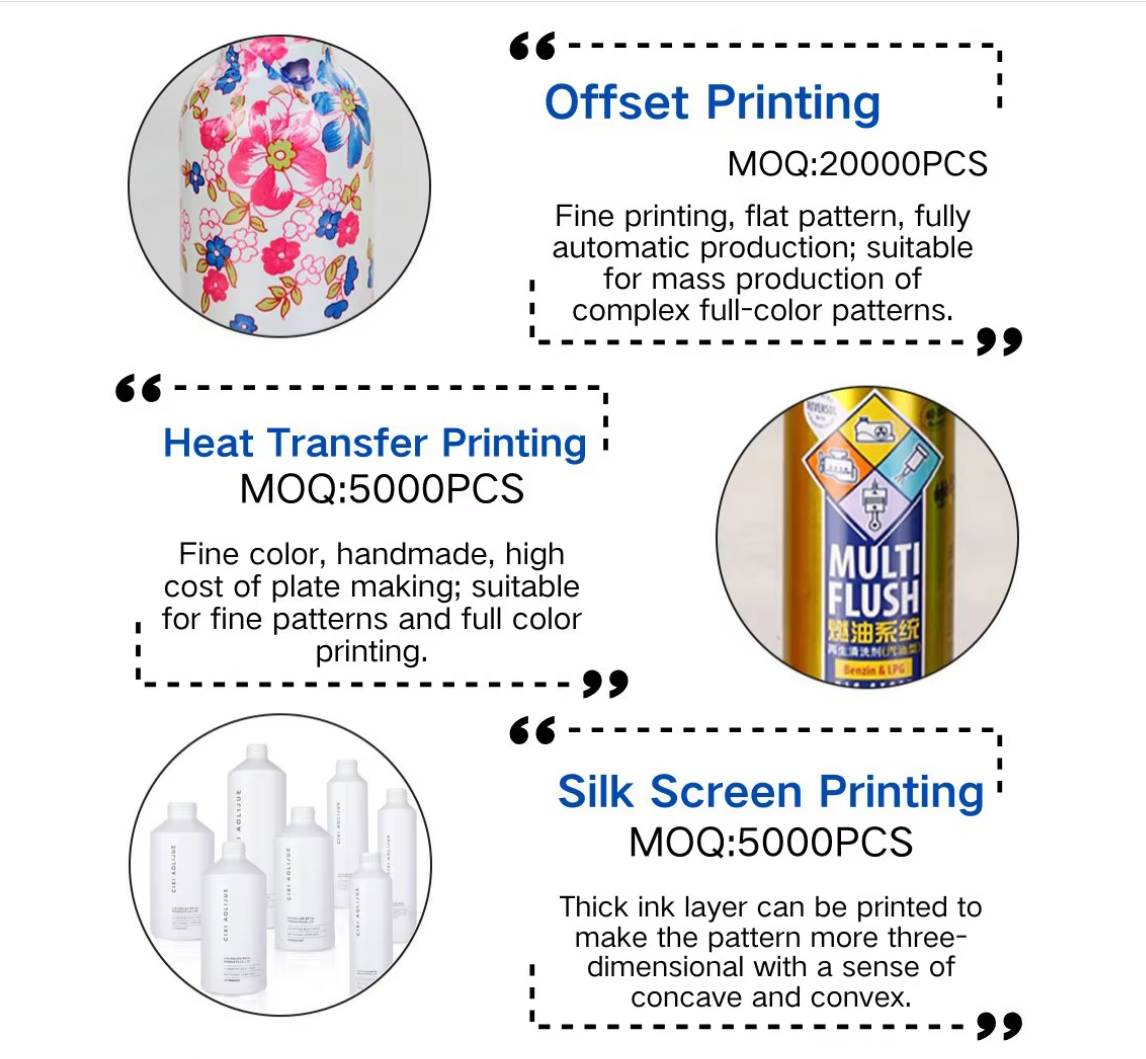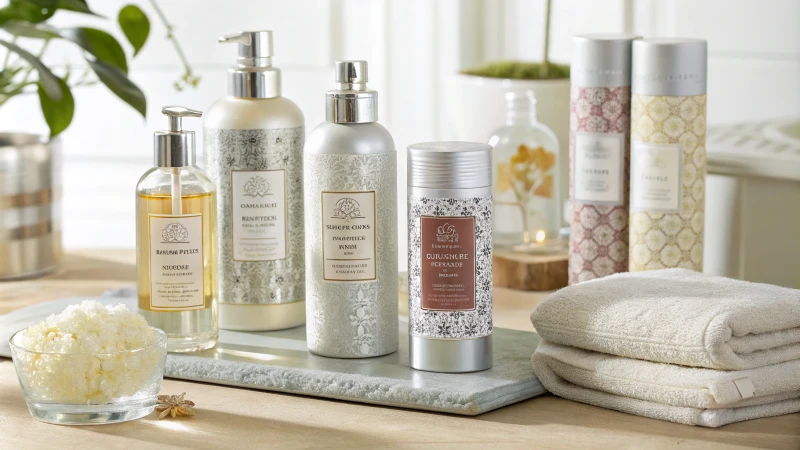
Have you ever considered changing to aluminum packaging for your beauty products? This choice might really transform things for both you and our planet.
Aluminum bottles offer great advantages for beauty and personal care products. They provide sustainability, durability and excellent leak protection. These bottles shine as a very eco-friendly choice compared to traditional glass and plastic. They keep your products safe. You're being kind to the planet too.
I remember the first time I saw aluminum bottles. It happened during a talk with another entrepreneur who cared deeply about sustainability. The idea of using materials that keep our products safe and help the environment fascinated me. After changing to aluminum bottles, their strength and reliability surprised me. They stop leaks effectively, a common problem in our industry.
In this blog, I explore the strong reasons to pick aluminum bottles. Their eco-friendly benefits and durability stand out. These reasons highlight why choosing them is important for your brand and our world.
Aluminum bottles are more sustainable than plastic containers.True
Aluminum is recyclable and has a lower environmental impact compared to plastic, making it a sustainable choice for beauty products.
Beauty products in aluminum bottles leak less than glass.True
The design of aluminum bottles provides better sealing, reducing the risk of leakage compared to traditional glass packaging.
What Are the Environmental Benefits of Aluminum Bottles?
If you have ever held an aluminum bottle, you probably felt relief. You chose something that supports our planet. I found out these bottles are more than stylish. They really symbolize hope for protecting the environment.
Aluminum bottles help the environment. They are very recyclable. Transporting them reduces the carbon footprint. Aluminum bottles do not have harmful chemicals like plastics. They are probably a safer packaging option.
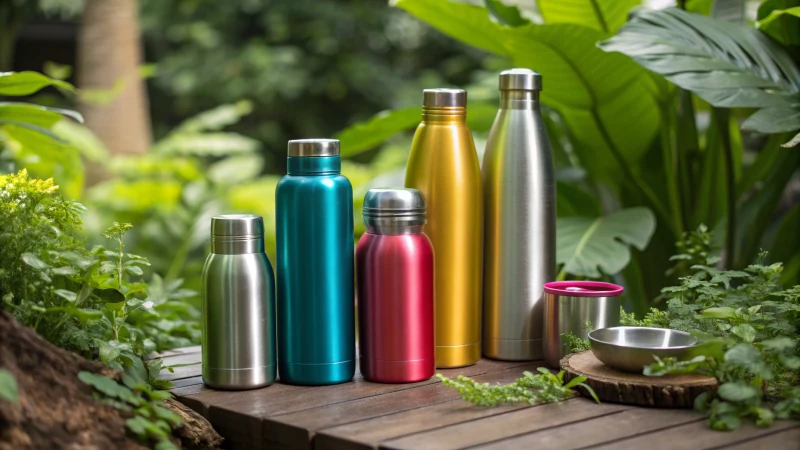
Reduced Environmental Footprint
I remember learning how packaging affects our environment. It was surprising! Aluminum bottles really reduce environmental harm compared to plastic. They weigh less and are strong, so they need less fuel for transport. This reduces emissions. Every time we choose aluminum, we're not just buying a product; we're opting for a cleaner, greener world.
For example, when I switched to aluminum bottles, I observed a drop in fuel use and greenhouse gases. It felt good to know I was part of something bigger: a community that values sustainability. It's a great feeling.
Explore more about carbon emissions1 related to packaging.
Recyclability and Reuse
Aluminum bottles have amazing recyclability. Did you know aluminum never loses quality during recycling? Remarkable! Around 75% of all aluminum ever made is still in use today. This is a huge difference from plastic, where only about 9% gets recycled effectively.
When I discovered this, I felt like finding hidden treasure in sustainability. Recycling each bottle feels like playing a small role in a bigger story.
Learn about the recycling process2 of aluminum.
Health and Safety Considerations
Switching to aluminum brought peace of mind. Many plastics leach harmful chemicals like BPA. Aluminum bottles, properly lined, offer a safer choice. This matters to me since health and safety are important.
Every sip from an aluminum bottle reassures me of supporting a healthier planet and taking care of myself. It's comforting.
Find out more about health risks of plastics3.
Energy Efficiency in Production
Producing aluminum bottles is very energy-efficient. Recycling aluminum saves up to 95% of the energy needed to produce it from raw materials. This means fewer fossil fuels and lower carbon emissions.
Those shiny aluminum bottles remind me of this energy saving. Supporting these feels right and makes me proud.
Check out the energy consumption statistics4 for different materials.
Conclusion
Reflecting on my shift from plastic to aluminum, this change really promises more sustainable packaging. Benefits like reduced emissions and health safety matter. Each aluminum bottle brings us closer to a greener future. It feels good knowing we are probably making a difference together.
Aluminum bottles reduce carbon emissions during transport.True
Due to their lightweight nature, aluminum bottles lower fuel consumption and greenhouse gas emissions in transportation compared to plastic bottles.
Only 9% of aluminum ever produced is still in use today.False
In reality, about 75% of all aluminum ever produced remains in use, highlighting its recyclability.
How Do Aluminum Bottles Compare to Glass and Plastic Packaging?
I began my journey in the laundry detergent industry and quickly saw the need for the right packaging. Aluminum bottles really stand out in this industry. They very much compete with glass and plastic packaging. Let's explore how they compare.
Aluminum bottles offer an eco-friendly option compared to glass and plastic packaging. These bottles are lightweight, strong and recyclable. They maintain their quality after recycling. Businesses like mine find them safer and more affordable.
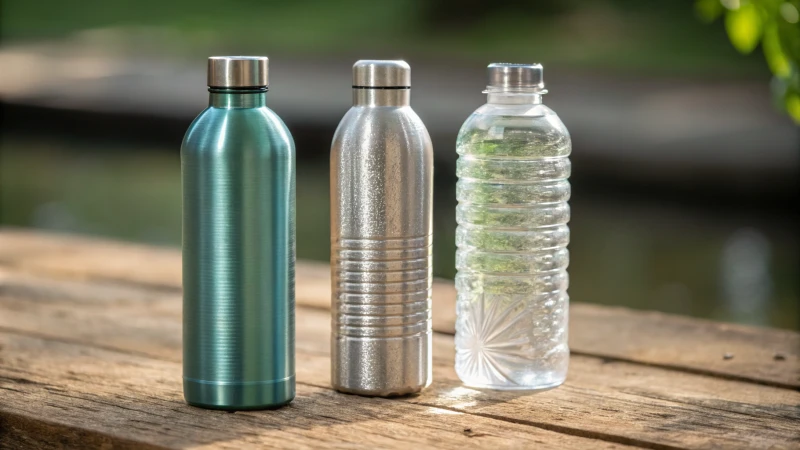
Environmental Impact of Packaging Materials
Choosing packaging feels very personal, not just business-related. I recall the first time I had to pick the right container for my product. It wasn't only about looks or price. The choice needed to fit my values. As I explored options, aluminum bottles stood out for their eco-friendly benefits.
When evaluating packaging options, environmental impact is crucial. Aluminum bottles are often considered more sustainable compared to plastic and glass.
-
Aluminum Recycling: Aluminum's endless recyclability amazed me. Using recycled aluminum requires 95% less energy than new aluminum. I felt I was truly helping the environment with this choice.
-
Glass Recycling: I learned that recycling glass often uses a lot of energy. Transporting glass also surprised me. Its weight increases carbon footprints significantly.
-
Plastic Recycling: Plastic's poor recycling record saddened me. Many plastics don’t recycle and I worry about them ending up in landfills or oceans, hurting wildlife.
For more about recycling, read our article on sustainable practices5.
Durability and Safety
Packaging durability worried me a lot, especially during shipping. Aluminum bottles resist breaking and leakage:
| Material | Durability | Safety Concerns |
|---|---|---|
| Aluminum | High | Minimal, non-reactive to most substances |
| Glass | Moderate | Breakable, potential for sharp edges |
| Plastic | Low | Can leach chemicals over time |
I remember when glass bottles broke during shipment. It was a real nightmare! Switching to aluminum increased my confidence that products arrive safely. For detailed safety insights, refer to our guide on material safety6.
Weight and Portability
Packaging weight affects logistics and customer experience:
- Aluminum: Aluminum's lightweight yet strong nature is fantastic. It very much eases transportation.
- Glass: Unlike aluminum, glass is heavy and fragile. This usually leads to higher shipping costs and potential losses.
- Plastic: Plastic is light but can be bulky, sometimes affecting the quality of contents.
For a deeper look into lightweight material benefits, explore our resource on packaging weight7.
Cost Considerations
Discussing costs is crucial for business owners:
Balancing these factors helped me decide based on both cost and sustainability.
| Material | Cost per Unit | Long-term Value |
|---|---|---|
| Aluminum | Moderate | High due to recyclability |
| Glass | High | Moderate to high; brittle nature can lead to losses |
| Plastic | Low | Low; often needs frequent replacement due to wear and tear |
For more on cost analysis in packaging, visit our page on cost-effectiveness8.
To sum up, my packaging journey taught me more than just practical choices. Choosing aluminum bottles embraces sustainability and quality for my products and the planet.
Aluminum bottles are more eco-friendly than plastic packaging.True
Aluminum can be recycled indefinitely, using significantly less energy than producing new materials, making it a sustainable choice over plastic.
Glass packaging is lighter than aluminum bottles.False
Glass is heavier and more breakable compared to aluminum, which is lightweight yet durable, affecting transport costs and safety.
What Safety Considerations Should You Keep in Mind with Aluminum Packaging?
Aluminum packaging is very popular for many people. But have you ever considered its safety? Let's explore the world of aluminum. We will see how it interacts with our food. This knowledge helps us choose wisely and safely.
Aluminum packaging presents some risks. Chemical leaching occurs with this type of packaging. Acidic or salty foods increase this risk. Selecting coated aluminum options is essential. Coated packaging provides better protection. Avoid storing acidic items for long periods. Long storage can be harmful. Use proper sealing techniques. Proper sealing maximizes safety. Always prioritize safety.
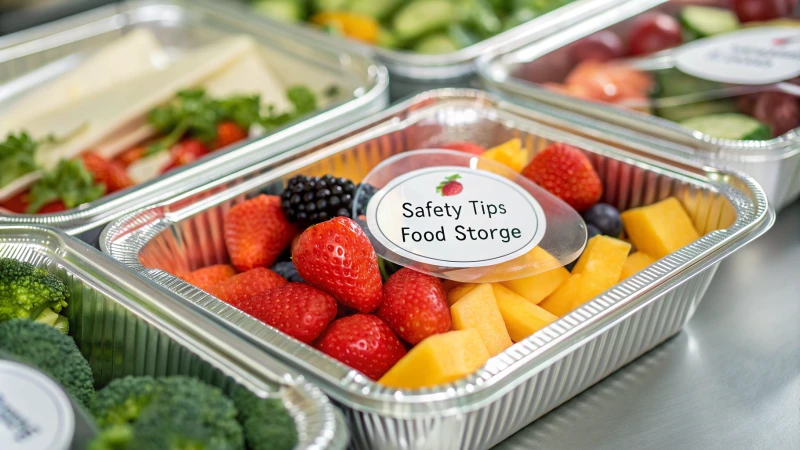
Understanding Aluminum and Its Qualities
Aluminum is a lightweight, corrosion-resistant metal that has become a popular choice for packaging. However, there are several safety considerations when using aluminum packaging, especially concerning its interaction with food products.
Chemical Leaching Concerns
One of the primary concerns is the potential for aluminum to leach into food and beverages. This is particularly true for acidic or salty items, which can increase the likelihood of leaching.
- Acidic Foods: Your favorite tomato sauce or lime dressing can be problems.
- Salty Foods: Also, think about pickles or any brined items, which raise leaching risks.
To mitigate these risks, manufacturers often apply protective coatings inside aluminum containers to prevent direct contact with food. Knowing about these coatings provides some relief. Curious about the science of leaching? Check out leaching effects9.
Regulatory Standards for Aluminum Packaging
Governments and health organizations have established guidelines and regulations to ensure the safety of aluminum packaging.
| Regulatory Body | Guidelines Overview |
|---|---|
| FDA | The Food and Drug Administration oversees the use of aluminum in food contact materials. They regulate how much aluminum can leach into food. |
| EFSA | The European Food Safety Authority evaluates the risks associated with aluminum exposure, particularly from packaging. |
| WHO | The World Health Organization provides recommendations regarding safe levels of aluminum consumption. |
These guidelines are essential for ensuring consumer safety. Manufacturers must adhere to these regulations to ensure their products are safe for public consumption.
Best Practices for Safe Use of Aluminum Packaging
For consumers and manufacturers alike, following best practices can significantly reduce safety concerns:
- Choose Coated Aluminum: I choose aluminum with a safe lining for food.
- Avoid Prolonged Storage of Acidic Foods: It’s best not to store acidic foods in aluminum for too long.
- Proper Sealing Techniques: Correctly sealing aluminum is crucial to stop leaks and contamination.
By adhering to these practices, both product quality and consumer safety can be enhanced. Explore more about best practices in packaging10 to ensure optimal safety.
Consumer Awareness and Education
Educating consumers about the proper usage of aluminum packaging can help mitigate risks. Awareness programs should include:
- The types of foods suitable for aluminum packaging
- Signs of damage on containers indicating contamination risks
Increasing awareness about these factors helps everyone make safer choices regarding their food storage options. Check out resources on consumer education in packaging11 for more insights.
Aluminum can leach into food when packaging acidic items.True
Acidic foods like tomatoes and citrus can increase aluminum leaching, posing health risks.
All aluminum packaging is safe for any type of food.False
Not all aluminum packaging is safe; coatings and food types affect safety significantly.
Can Aluminum Bottles Really Help Extend Product Shelf Life?
Aluminum bottles cause excitement in the packaging world. But do they truly extend product shelf life? I explore the benefits and really important considerations of this fascinating topic.
Aluminum bottles greatly increase product shelf life. Their excellent barrier properties block light, moisture and oxygen. Your products stay fresher much longer than with other materials.
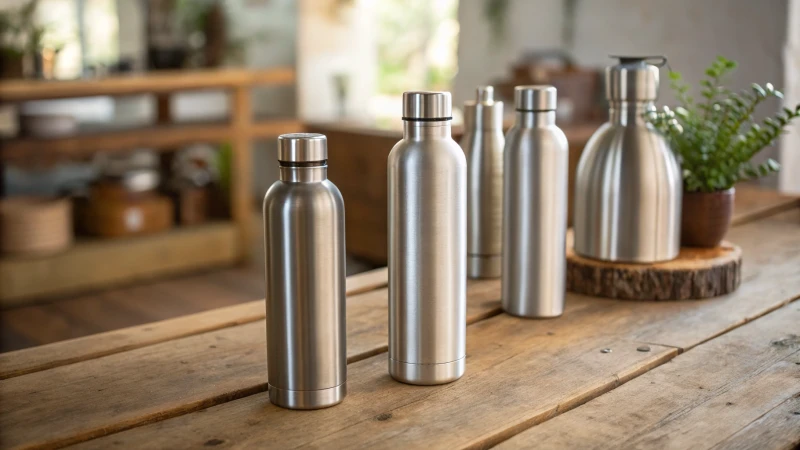
Understanding Aluminum as a Packaging Material
When I started in the laundry detergent business, I needed packaging that looked nice and kept my product safe. Aluminum bottles caught my attention. They are not only fashionable; they also have features that really help keep products fresh.
-
Barrier Properties: Aluminum blocks light, moisture, and oxygen, which can spoil products. Imagine your favorite drink losing its fizz on the shelf because of bright light. Aluminum solves this problem.
-
Recyclability: As someone who cares about the planet, I was excited to find out that aluminum is highly recyclable. Choosing aluminum means I support quality and eco-friendliness. Many consumers today appreciate this. Learn more about sustainability12.
The Impact on Product Quality
The quality of my product is extremely important. Aluminum bottles help in many ways:
| Feature | Benefit |
|---|---|
| Light Protection | Prevents degradation of light-sensitive ingredients. |
| Moisture Control | Reduces the risk of condensation and product dilution. |
| Odor Barrier | Keeps external odors from affecting the product. |
| Leak Resistance | Ensures safe transportation and storage, addressing concerns about leakage. |
These attributes help brands ensure their products remain effective throughout their intended shelf life, which is crucial for customer satisfaction and brand loyalty.
Comparing Aluminum with Other Materials
I often think about different packaging options. Aluminum stands out against other materials:
- Plastic: Lightweight and cheap but often lets gas and moisture in.
- Glass: Protects well but breaks easily; I've dealt with many broken glass bottles.
- Aluminum: Combines lightness with great protection, making it my top choice.
Knowing these differences helps me decide on the best packaging for my customers. Check out packaging comparisons13.
Case Studies on Shelf Life Extension
I've seen inspiring examples in my years in the industry. Here’s how companies use aluminum bottles successfully:
- Beverage Brands: Their stories show increased shelf life due to aluminum's protective qualities.
- Cosmetics: Less spoilage occurs in aluminum compared to glass or plastic.
- Pharmaceuticals: Medications stored in aluminum have better stability over time.
These stories inspire me; they show why using aluminum is a really good decision—it preserves quality.
Final Thoughts on Aluminum Bottles' Benefits
Aluminum bottles are not just a fad; they are a wise choice for brands like mine that focus on product longevity and environmental care. By choosing this smart material, I am improving my packaging strategy while supporting a more sustainable future. Explore further insights14.
Aluminum bottles provide superior barrier properties for products.True
Aluminum bottles effectively block light, moisture, and oxygen, which helps maintain product quality and extends shelf life compared to other materials.
Plastic bottles are more effective than aluminum for shelf life.False
Unlike aluminum, plastic bottles often allow gas and moisture penetration, making them less effective at preserving product integrity and shelf life.
Conclusion
Aluminum bottles provide sustainability, durability, and leak protection for beauty products while reducing environmental impact and extending shelf life.
-
This link will provide in-depth information on how aluminum compares with other packaging materials in terms of sustainability. ↩
-
Gain insights into the recycling process and how aluminum can contribute to a circular economy. ↩
-
Discover why choosing aluminum over plastic can improve health safety in product packaging. ↩
-
Explore statistics on energy consumption during the production of various packaging materials for better understanding. ↩
-
Explore this link to gain insights on the environmental benefits of using aluminum over plastic and glass, crucial for making eco-friendly decisions. ↩
-
Learn about material safety issues with packaging options that could impact consumer health and product quality. ↩
-
Discover how weight affects transportation costs and convenience in packaging choices for businesses. ↩
-
Get detailed insights into the long-term value of different packaging materials to inform your purchasing decisions. ↩
-
Discover key insights into aluminum safety standards and how they protect consumers while using aluminum packaging. ↩
-
Learn about the best practices for using aluminum packaging safely and effectively in your kitchen. ↩
-
Understand how consumer education impacts the safe use of aluminum packaging materials in daily life. ↩
-
Discover how aluminum packaging can enhance your product's longevity while being eco-friendly. ↩
-
Learn about the advantages of aluminum vs plastic and glass in preserving quality. ↩
-
Gain insights into successful case studies of products using aluminum bottles. ↩

